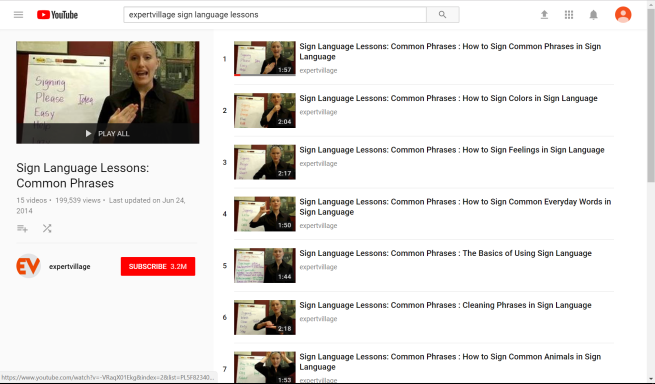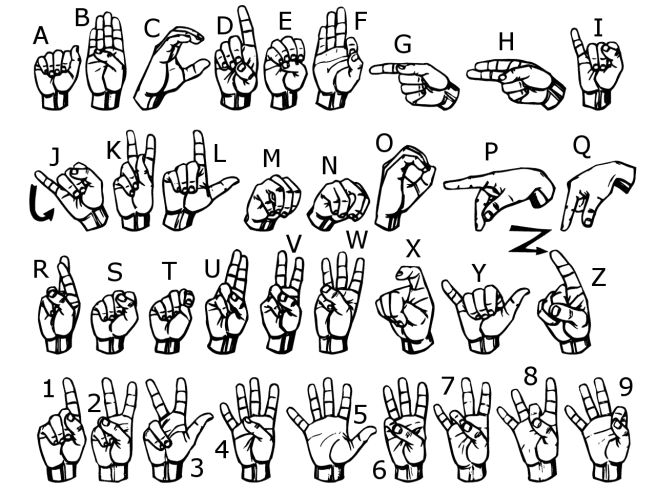Sign language is a language which mainly uses manual communication to convey meaning. This involves simultaneously combining hand shapes, movement and orientation of the hands, arms or body, and facial expressions to convey ideas of the speaker. However, just like spoken languages, sign language expressions vary among different groups of people as English is different from French which is different from Chinese which is different from every other sign language community. Sign language usually expresses ideas rather than just single words. For example in ASL (American Sign Language) The Linguistics Society informs people that, “The hand’s orientation and the direction in which it moves indicate who is asking whom. English requires three different words to express ‘ask,’ the person asking, and the person asked. In ASL the complex meanings ‘I ask her’ and ‘she asks me’ are each expressed by a single sign. A single ASL sign can express even more. Adding a circular movement to these signs produces signs meaning ‘I ask her for a long time’ and ‘she asks me for a long time’ (1). In sign language many actions can have small variations just to me different things. Compared to English, ASL can be different grammatically as when using question words such as “who”, “what”, “when”, “where”, and “why” those words come either at the end of the sentence or both at the beginning and the end.

Perlmutter, David M. What Is Sign Language? Linguistics Society of America, http://www.linguisticsociety.org/sites/default/files/Sign_Language.pdf.



